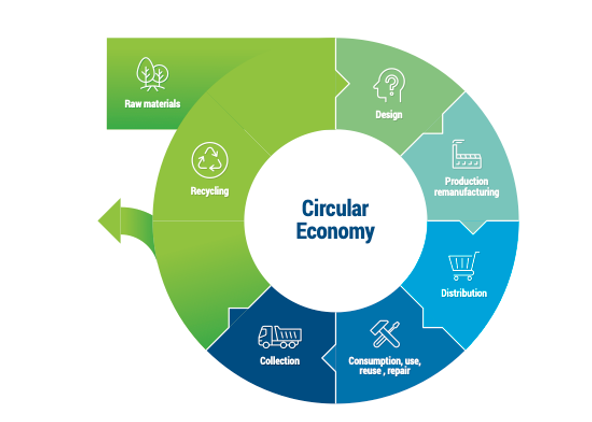Circular Economy at MRA
The concept of the circular economy encourages a shift away from a take-use-dispose model, also referred to as the linear economy, towards reuse/repair/refill/repurpose/sharing practises. Ellen McArthur’s Foundation (2021) offers an in-depth three pillar definition that aligns with Australia’s recently expanded National Waste Hierarchy:
- Designing out waste and pollution
- Reminds us that resource scarcity is a global challenge and if materials continue to be sent to landfill or incinerators, economies will face mounting pressures to sustain livelihoods;
- Keeping products and materials in use at their highest value
- Societies must use the technical cycle (reuse, repair, remanufacture, and recycle) & biological cycle (encouraging biodegradability through composting/anaerobic digestion to boost the nutrient profile of soils and their water as well as carbon holding capacity)
- Recycling is the last resort once upstream interventions have been exhausted for a specific material or product
- Regenerate natural systems
- Shifting from extraction towards regeneration: returning nutrients back to the soil enhances genetic, species, and ecosystem diversity.

Our CE Team has expertise in several circular economy projects, including:
- Extended Producer Responsibility
- Designing out materials upstream – glass, plastics, tyres, PV cells, textiles etc.
- Measuring and modelling the Circular Economy – metrics (economic, environmental, and social)
- Building a social license for an enterprise or local government council in the CE
- Lease-back models – case study analysis (international best practises)
- Behaviour change science and translating this into communication strategies / consultation workshops with government, businesses, and community to implement MRA’s circular recommendations
- Policy and Legislation Gap / Discourse Analysis
We also consult clients on and develop strategies for circular opportunities in several industry sectors. Some examples include:
- Agriculture and organics – includes urban farming and regenerative food systems
- Energy – transport, wind and solar farms/microgrids, hydropower and other renewable technologies (including end-of-life recycling for critical materials)
- Defence
- Packaging – aligning with sustainable packaging guidelines and strategy development, reusable and refillable packaging strategies and policy advocacy
- Business and Innovation Development
- The Built Environment
- Decarbonisation targets and actions in mining.

We strive to quantify the economic, environmental, and social outcomes of these circular opportunities by illustrating these findings using MRA’s novel priority action model to clearly show which circular interventions should be pursued over the short (1-2 yrs.), medium (3-5 yrs.), and long-term (yrs.) to reap the highest value vis-à-vis cost, GHG emissions, water, and energy savings while building strong and interconnected community-business networks.
If you’re interested in learning more, we are always happy to chat about your organisation’s interests, expectations, and goals for participation in the CE. The CE team also collaborates with other MRA teams to ensure we are providing valuable and implementable actions for our clients.
Feel free to reach out to the team via circular@mraconsulting.com.au



